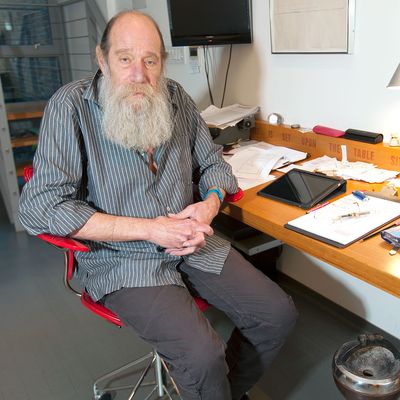
When my taxi reached the street block in the West Village, I spotted the silvery, Mondrian-proportioned building among the brownstones that no doubt belonged to Lawrence Weiner. He recounted, “It was a little house, and for 20 years it was just fine, but then the lords of the earth started to build up, and then — no more air, no more light. This is a landmark area, which meant an awful lot of negotiating when we collapsed the house. We [Weiner and his wife, wife Alice] brought in LOT-EK. They have a good sense of space, and Alice has got a good sense of engineering.”
Weiner was working on several upcoming projects and was about to head to the Montreal Biennale, BNLMTL 2014, where his early work involving the Canadian arctic is on exhibition. Weiner is regarded as a Conceptualist who uses language as his primary medium — as a sculptor would clay. Phrases he invents — each of which might be installed in various renditions — take on meaning due to a nexus of factors that include location, architecture, cultural environments, and the eye of the beholder. He had recently returned from several international projects, two of which were based in Reykjavík and São Paulo. Click below to hear Weiner talk about the public relating to his work.
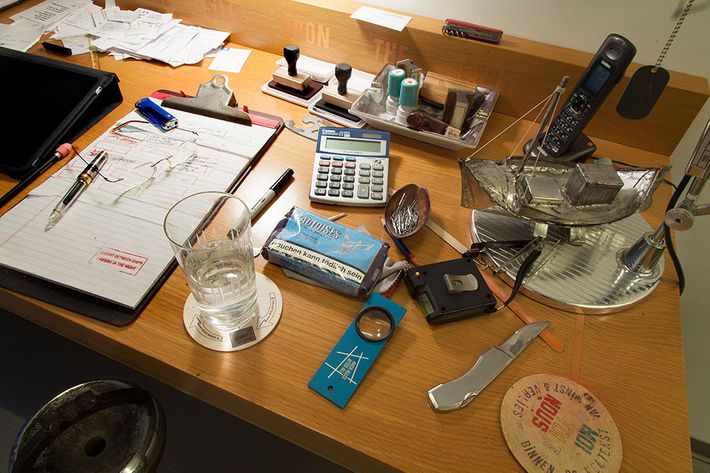
Along the back lip of his desktop reads, “WHAT IS SET UPON THE TABLE SITS UPON THE TABLE.” He pointed to a model boat by his light. “This was sent to me from Iceland. It’s made from fish and oil tins. Isn’t it gorgeous? I had something to do with the sea at one point. I worked on the docks and I worked on boats. As a kid sometimes shipping from Savannah to Galveston, I would stand on the back of the boat, probably smoke a joint, and look at the skid and get a sense of the totality of what I was doing, and then would go back in the engine room. Which gave me no totality of anything!” he laughed.
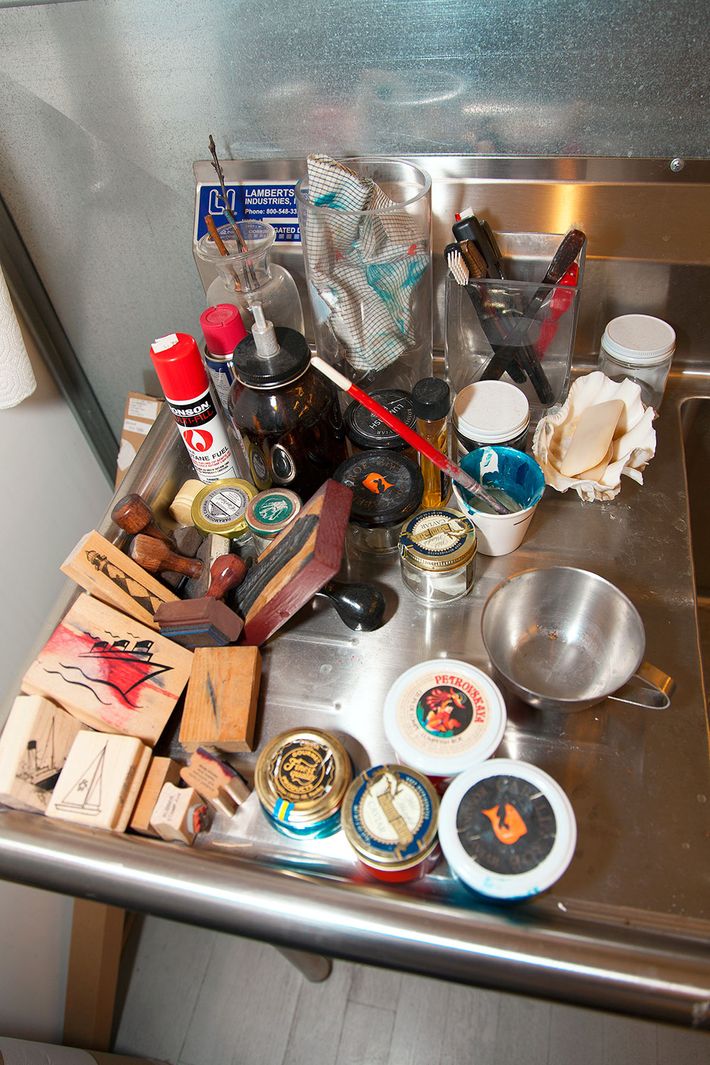
He stamped the paper he was working on with “CAUGHT BETWEEN SHIPS PASSING IN THE NIGHT.” “You need to have rubber stamps for drawings sometimes. They’re just pragmatic. I use them to draw with. I have them made. Some of them might have been commercial. That’s not all of them; there’s more. They’re materials — tools.”
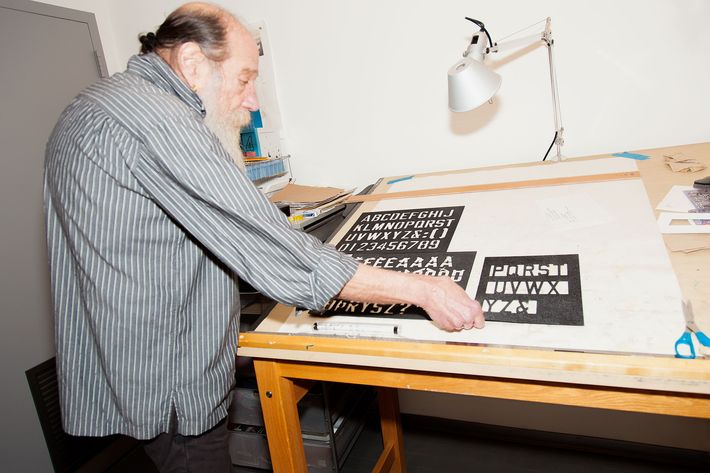
We traveled over to his drafting table. I saw a clear-plastic letter stencil among the tools and asked if it was his font. “No,” he swiftly pulled a black-colored set out of a drawer and dropped them on the table. “That’s my font. And that’s designing in another way. I design them and have them made.”
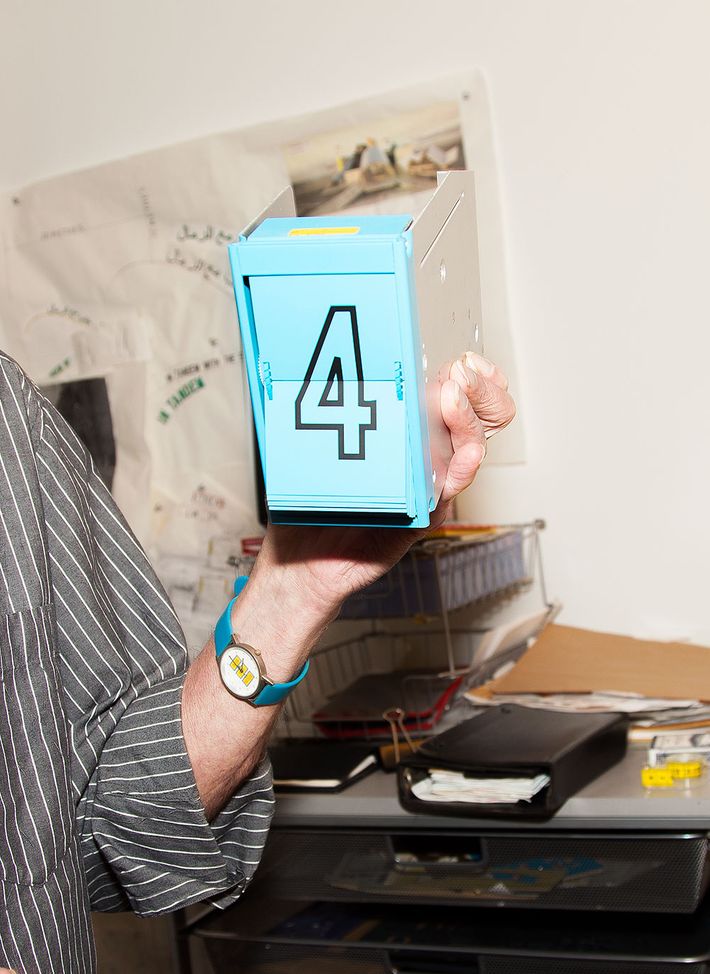
Weiner located a cyan-colored split-flap with changeable numbers — the type in train stations. “This is the one they have in León. Have you ever been in a European train station with the flaps going? Well, I did a project for somebody. I designed one at a different size and color and my own typeface.”
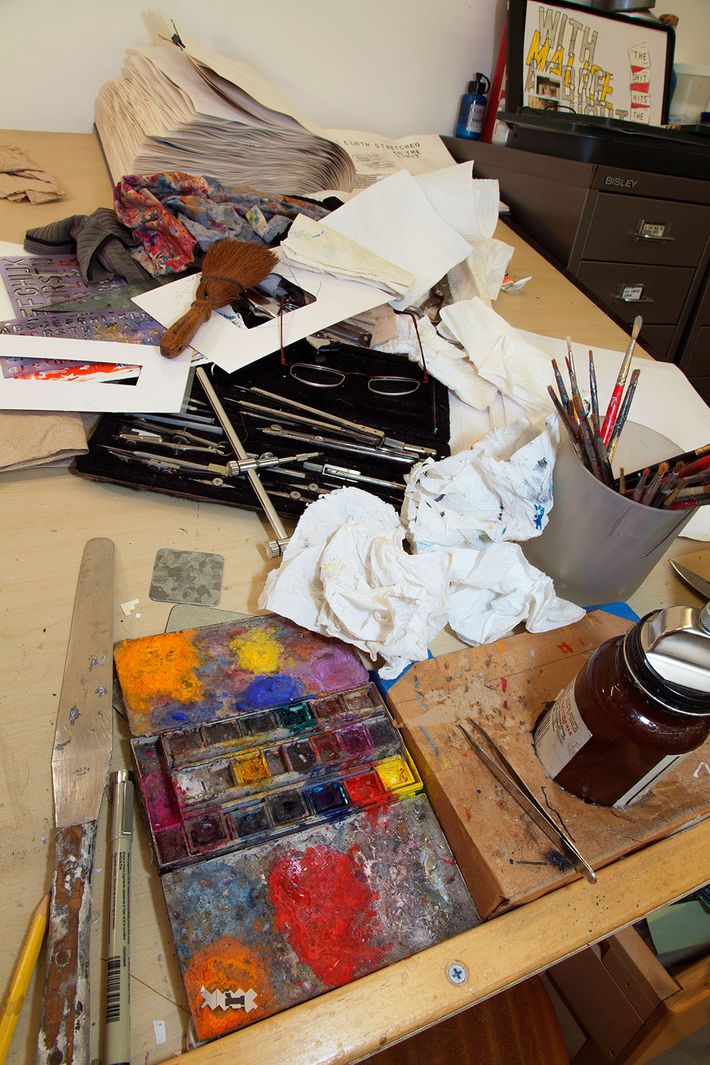
“I do almost all of the drawing that Lauren [Wolchik, his studio assistant] translates into machine. I believe in the division of labor and that if someone is good at something, let them do it. Some of those tools I’ve had for quite a long, long time. I even had a triangle that I had from high-school days that I bought at Central Supply, but it finally broke,“ he laughed.
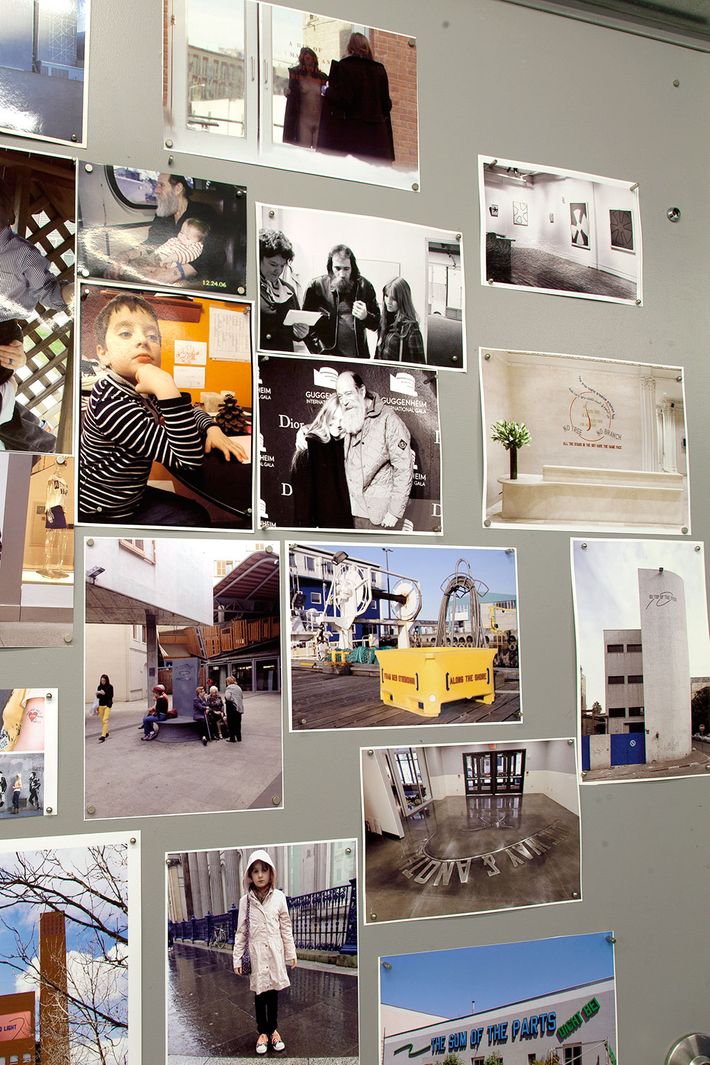
“As far as accumulating, I usually just occasionally change photographs on the elevator door. Right on the wall is something the Museum of Modern Art found.” He pointed to a black-and-white photo at the upper right. “That’s a picture of my first one-person show in New York City, on 56th Street at the Seth Siegelaub Contemporary Art Gallery. I was 22 years old.” I thought I had read he was even younger. “There’s a little problem with the dates of my birth — political problems. Because of McCarthy, a lot of people had a lot of different papers. You couldn’t work unless you were 18, like on ships and things. So you got phony papers. By the time you’re all finished, my birth date is 1942, not 1940. It was purely convenient! So 18, 19, what difference does it make?”
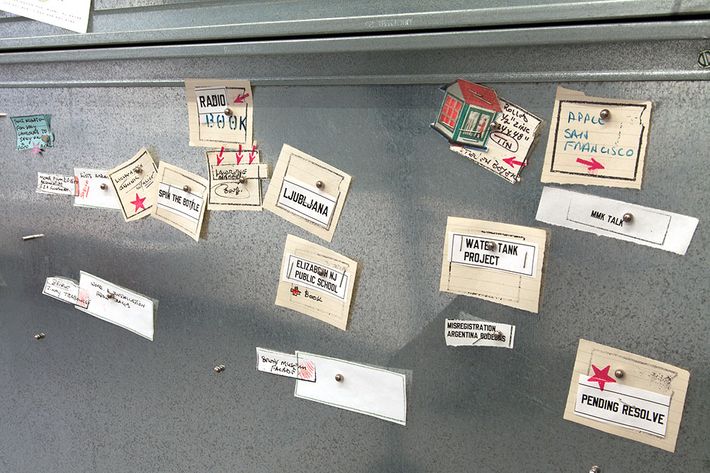
Along the galvanized-sheet wall were magnets ready to tack pieces of paper associated with projects to, as well as a few abstract categories such as “Spin the Bottle” and (spotted more than once in the studio) “Pending Resolve.” No piece of text in the studio went unconsidered. A set of drawers had labels such as: “& That Was the Trouble With Aristotle”; “Catch As Catch Can”; and “Touched Paper.”
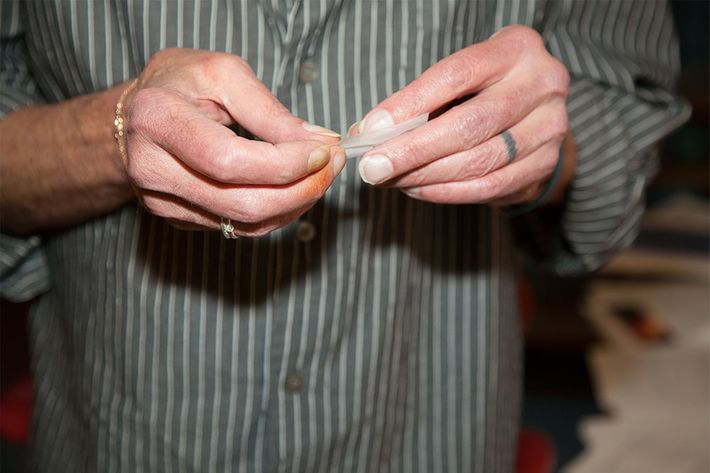
I asked if he had any rituals. “I don’t really know. Do I have a ritual or anything?” he asked Lauren. She responded, “We have routines, perhaps — is maybe a better way of saying it. We start the day, go through the email, do the bigger projects, talk about things going on. I mean, your smoking habits are perhaps ritualistic!” She laughed. “That’s my habit!” He shot back. “And it’s an idiotic habit, but it’s a habit.” But then Weiner was reminded of one superstition he holds: that seeing a dime is good luck. Click below to hear why.
* * *
Weiner’s work is represented by Marian Goodman Gallery, New York; Regen Projects, Los Angeles; Lisson Gallery, London; and Yvon Lambert, Paris; among others.
Sarah Trigg is the author and photographer of STUDIO LIFE: Rituals, Collections, Tools and Observations on the Artistic Process.


